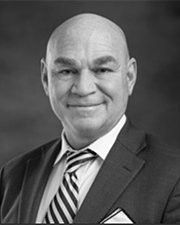


Back in 2013 at an industry event in Orlando, FL., the idea was hatched that hotels did not always have to be stick-built on site but rather could be built in a factory, transported to a site, and lowered in place by a crane. At that time, modular home construction was well-established. Modular hotel construction, however, had yet to be done at any scale. Would the hotel brands approve a hotel constructed like Legos? In light of the many advantages that are available to a hotel built through modular construction, a number of the major brands, Marriott foremost among them, decided not only to approve but also actively to encourage and facilitate modular construction of their product. Over the last 10 years, we estimate that at least 52 Marriott-branded modular hotels were built in the U.S. That said, there are precious few modular hotels in New England. Hotel Jay at Jay Peak in Vermont comes to mind. The paucity of modular hotels in our region may be explained by the greater age and density of development of our region, by the relatively limited uptake capacity of regional factories mainly tasked to produce multi-family residential modules, by the lack of local developer and lender experience with the construction and financing of modular hotels, or by a combination of the foregoing. There is a compelling case, however, to be made for considering the modular approach in New England once the next building cycle arrives.
Approximately 80% of a modular hotel building is produced in a factory, indoors, in a climate-controlled setting and by trained workers skilled at building a well-defined product with which they are familiar. The remaining 20% of the hotel construction effort comprises site preparation, foundations, assembling the modules on site and connecting utilities. While the modules are being built, the typical risks of onsite construction such as weather delays, theft, vandalism and labor shortages or interruptions are eliminated. Most often, the labor done at the factory is non-union, leaving only the site subcontracts to have potential union involvement. Modules are built to brand standard and may be fitted out at the factory with a full package of furniture, fixtures and equipment available for selection and installation among a range of brand-compliant choices. Thus, even the furniture, fixtures and equipment (FF&E) are insulated from damage that can often occur with onsite installation.
Much more time is devoted to design and connectivity at the inception of a modular project than is the case with onsite stick-building. Moreover, quality control during the process of construction is easier in a factory setting. Experience has shown that the additional design and supervisory time devoted to ensuring that the end-product will truly be “plug and play” and brand-compliant has eliminated the risk of contractor-generated change orders. In addition, because a modular project occupies a production slot in a factory which knows when construction will open and close in that slot based upon knowledge of its overall capacity and scheduling, construction delays are virtually eliminated. Time is money, after all, and while the cost to build modular versus stick is not necessarily cheaper, the modular project will almost always come in on time and on budget. The same cannot be said for stick-built projects. Most importantly, modular construction shortens the typical eighteen to twenty-four month time frame required for onsite construction to twelve or fewer months. Since the modular schedule is much more reliable, a hotel owner can better time opening of the new hotel in a New England high season, rather than in the dead of winter. The financial advantages to commencement of operations at a modular hotel at least six months prior to a stick-built hotel are obvious and account for a large part of the brands’ enthusiasm for the product.
Before a production slot may be reserved, the factory will typically require an advance deposit of forty percent of the overall cost of the project. Before the project is placed on the line for construction, the factory will typically require that an additional advance payment of 40% of the overall cost of the project be made. The remaining 20% is due and payable at delivery of the finished modules. There are lenders which have experience with providing construction financing on these terms and with underwriting the risk profile presented by the lump sum payments, which differs from the traditional method of construction financing that involves all project equity being funded first, followed by the lender’s loan proceeds, on a monthly draw basis with the lender’s never having to fund more than is due for work in place. Lenders unfamiliar with modular construction funding requirements may struggle to get comfortable with collateral comprised of both real estate and significant to-be-built personal property. Both the developer and the factory have a role to play in assisting a lender to understand how best to document the deal and protect itself based upon their knowledge of the financing structures adopted in similar deals with which the factory had been involved. For example, bonding is available to assure performance by the factory although at an additional cost. Lenders who have done repeat deals with a particular borrower and factory teams do not often require such bonding.
If the reader is not yet sold on the “why” of modular construction, perhaps a focus on a new and unique “how” and “what” of modular construction offered by Vantem Global, Inc. will carry the day. Vantem is a modular construction company that produces a proprietary structural panel for incorporation into modules. The panel is made of inorganic materials having an extremely efficient insulation core and structural integrity beyond other, more traditional building materials. The panels’ materials resist mold and insect infestation, unlike wood and drywall, thus reducing maintenance costs and improving guest experience. Their structural bearing capacity means they need not be interrupted for structural support. Traditional wood or steel framed construction must have studs every two feet or so that interrupt the insulation layer and act to be a thermal bridge conducting energy from one side of the wall to the other thereby reducing heating and cooling efficiency. A modular hotel built in New England with Vantem product should see a reduction in overall heating and cooling costs of up to 50% versus a stick-built hotel. Since hotels are price based upon a capitalization rate applied to net operating income, this savings translates into significant long-term value. Vantem’s energy efficiency and CO2 reduction characteristics should have appeal to lenders and investors including by reason of checking a social responsibility box. Finally, the panels’ structural characteristics will offer greater protection against the ravages of climate change and the need to periodically do extensive maintenance or improvement work to satisfy brand standard property improvement plan requirements.
Ken MacKenzie is partner of Dalton & Finegold, LLP and a member of the International Hospitality Consultants (ISHC).
Formerly MacKenzie was the co-leader of the hospitality and recreation group at Goulston & Storrs. MacKenzie represents institutional investors, private equity funds, investment managers, pension funds, university endowments, REITs, major lending institutions and developers in the acquisition, financing and disposition of all classes of real estate assets both nationally and internationally.
MacKenzie specializes in transactions involving hospitality assets and has significant experience in large-scale joint-ventured deals, often involving non-profit institutions such as universities or hospitals. He frequently assists clients in structuring their responses to RFPs for complex mixed-use projects.
MacKenzie received his A.B. from Dartmouth College and his J.D. from Boston University School of Law, where he graduated magna cum laude. MacKenzie is admitted to practice law in the state of Massachusetts.
Jason Carter is executive vice president business development for Vantem Global, Inc. An expert in the industry of modular construction, including factory development and design, automation, operations, product development, and distribution.
He has been an executive leader in the industry for over 20 years, starting in 2001 at Oakwood Homes (now Clayton) where he served as manager, change agent, and vice president developing new regional plans, market turnarounds, and retail store improvement. Carter later served as regional manager of Centennial Homes in 2008 through 2010 expanding the company’s business in the Bakken area of North Dakota, developing sales and operation programs for the company and expanding the company’s business.




